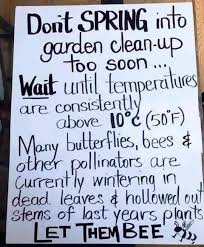As the weather continues to warm and the first buds of spring begin to emerge, many homeowners feel an undeniable urge to rush outside and dive into their yard work. After months of being cooped up indoors, the prospect of tending to the garden, mowing the lawn, and sprucing up outdoor spaces can be incredibly enticing. However, while the enthusiasm for spring yard work is understandable, it’s essential to exercise caution and resist the temptation to start too early. Here are several reasons why patience truly pays off when it comes to tackling spring yard chores:
- Risk of Frost Damage: One of the most significant dangers of starting spring yard work too early is the risk of frost damage to delicate plants. Even if the weather starts to warm up, unexpected cold snaps can still occur, posing a threat to newly emerging vegetation. Prematurely planting tender annuals or exposing vulnerable perennials to frost can result in irreversible damage, setting back your garden’s progress and requiring additional time and resources to recover.
- Soil Moisture Concerns: Early spring soil tends to be damp and compacted from winter precipitation. Working in soggy soil can lead to soil compaction, which restricts root growth and hinders proper drainage. Additionally, walking or using heavy equipment on wet soil can cause it to become compacted, making it harder for plants to thrive. Waiting until the soil has had a chance to dry out slightly allows for easier cultivation and minimizes the risk of damage to soil structure.
- Delayed Growth: While the urge to jumpstart your garden may be strong, rushing into spring yard work can actually delay the overall growth and health of your plants. Performing tasks such as pruning or fertilizing too early can stimulate new growth prematurely, leaving plants vulnerable to late-season frost or cold temperatures. By waiting until the weather has stabilized and plants are actively growing, you can ensure that they receive the proper care at the optimal time, maximizing their potential for robust growth throughout the season.
- Pest and Weed Management: Early spring is a critical time for addressing pest and weed issues in the yard. However, initiating pest control measures or weed removal too soon may be ineffective, as many pests and weeds have not yet become active or visible. Waiting until later in the season when pests and weeds are more actively feeding and growing allows for more targeted and efficient control methods, ultimately reducing the need for repeated treatments.
- Personal Safety Considerations: Spring yard work often involves tasks that require physical exertion and exposure to potential hazards, such as heavy lifting, use of power tools, and working at heights. Rushing into these tasks without proper preparation or waiting for more favorable weather conditions can increase the risk of accidents or injuries. Taking the time to assess safety hazards, gather necessary equipment, and plan tasks accordingly can help ensure a safer and more successful outcome.
In conclusion, while the arrival of spring may fill us with excitement and eagerness to tackle outdoor projects, it’s essential to approach spring yard work with patience and careful consideration. By waiting for the right conditions and timing, homeowners can protect their plants from potential damage, promote healthier growth, and achieve better overall results in their gardens and landscapes. So, before you grab your gardening gloves and shovel, take a moment to assess the situation and remember that sometimes, the best course of action is to wait for nature to take its course. Your yard—and your sanity—will thank you for it in the long run.

 Facebook
Facebook
 X
X
 Pinterest
Pinterest
 Copy Link
Copy Link


